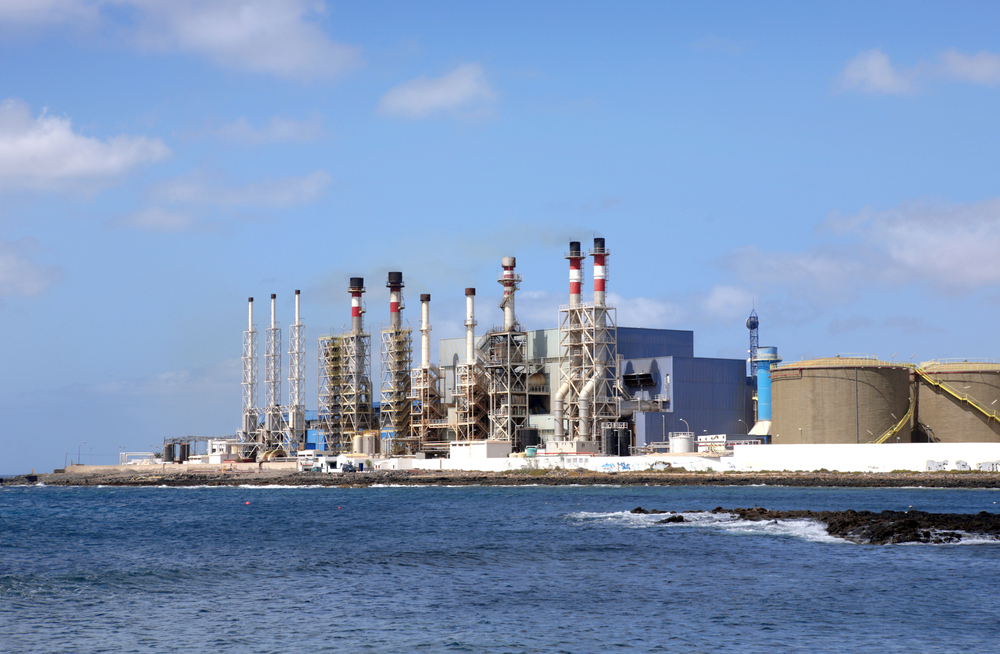Getting Soaked? Desalination Plants Face Scrutiny

While much of the western United States withers under a relentless drought, a small pocket of Southern California is taking advantage of the world's largest body of water: the Pacific Ocean.
The Carlsbad Desalination Project, now under construction in San Diego County, will be the largest desalination plant in the Western Hemisphere when it goes online in 2016. The $1 billion plant is expected to produce up to 50 million gallons (190,000 cubic meters) of freshwater a day, fulfilling about 7 percent of the region's water demand.
But because satisfying a small fraction of the area's thirst comes at a big cost — and due to concerns over the facility's environmental impact — the entire project faces unprecedented scrutiny. "There's a lot of eyes on this," Sandra Kerl, deputy general manager of the San Diego County Water Authority, told The New York Times. [5 Ways We Waste Water]
How desalination works
The Carlsbad Desalination Project will use reverse osmosis, a reliable technology that uses fine-pored, cylindrical membranes to filter salt, other minerals and impurities out of seawater. Reverse osmosis has become more practical, as recent advances in membrane technology have made the technique more cost-effective.
Nonetheless, it still takes about 2 gallons (8 liters) of seawater to make 1 gallon (4 liters) of freshwater, according to a 2013 report from the Pacific Institute, a nonprofit environmental and economic research group. And despite advances in energy recovery, separating salt from saltwater remains a very energy-intensive enterprise.
As a result, many desalination facilities are cogeneration plants, which use the heat generated from another process to convert salt or brackish water into freshwater. Nuclear power plants, for example, create intense heat and require water to cool their reactors and generate steam. That same heat can be used to distill freshwater from seawater.
Sign up for the Live Science daily newsletter now
Get the world’s most fascinating discoveries delivered straight to your inbox.
Energy costs debated
It's the energy costs associated with desalination that make the technique — once the stuff of engineers' pipe dreams — such a pricey endeavor. The San Diego County Water Authority has agreed to purchase the water from Poseidon Water, the Carlsbad plant's operator, for about $2,000 an acre-foot for 30 years after the plant goes online. (An acre-foot is the volume of water that would cover an acre with one foot of water — about 326,000 gallons, or 1,234 cubic meters.)
The trouble is, that cost is almost double what the agency now pays for water, and will raise ratepayers' bills by about 10 percent, according to NBC News.
That rate hike has some critics of the Carlsbad desalination project crying foul. "The only way to make desal[ination] work is if there's some guarantees that the price of water can be lowered," Leila Monroe, an attorney for the Natural Resources Defense Council, told CNBC.
It's not just ratepayers who are taking a dim view of the economics behind desalination: In 2013, financial and investment analysts at Fitch Ratings gave the Carlsbad project's bond issue a BBB- rating, the lowest rating possible for investment-grade debt, the Times reported.
Proponents of desalination projects like the one at Carlsbad, however, have one irrefutable argument: California needs the water, and all of the obvious sources have been tapped out, making water an increasingly rare commodity that will become more costly every year. [10 Ways to Green Your Home]
"Even though there is a significant [cost] difference right now, those costs will converge in the future, [and] that convergence could happen as soon as the early 2020s," Bob Yamada, planning manager with the San Diego County Water Authority, told NBC.
No 'crystal ball'
Even ardent environmentalists acknowledge that water in California isn't getting any cheaper. "The trend of imported water [pricing] is definitely going up," Heather Cooley, of the Pacific Institute, told NBC.
"We actually support desalination when properly used, but you should look at the other options first," Charlotte Allen, co-chairwoman of the Sierra Club San Francisco Bay Chapter Water Committee, told the San Francisco Chronicle.
But environmentalists are also demanding that other alternatives be explored before expensive, large-scale desalination facilities dot the California coastline — in addition to Carlsbad, there are 16 other plants in the planning stages from the Bay Area to San Diego County.
"There is just a lot more that can be done on both the conservation side and the water-recycling side before you get to [desalination], and we feel, in a lot of cases, that we haven't really explored all of those options," Rick Wilson, coastal management coordinator with the environmental group Surfrider Foundation, told NBC.
Right now, nobody knows for sure how much the presence of the Carlsbad facility will change the water picture for parched California — where many cities' water has to be imported from other regions or states — which is why so many people are watching the facility's progress so carefully.
"We have some major infrastructure investments needed for imported water in California," Cooley told NBC. "I don't have a crystal ball for what it is going to look like, but no doubt it will raise the price of imported water."
Follow Marc Lallanilla on Twitter and Google+. Follow us @livescience, Facebook & Google+. Original article on Live Science.










